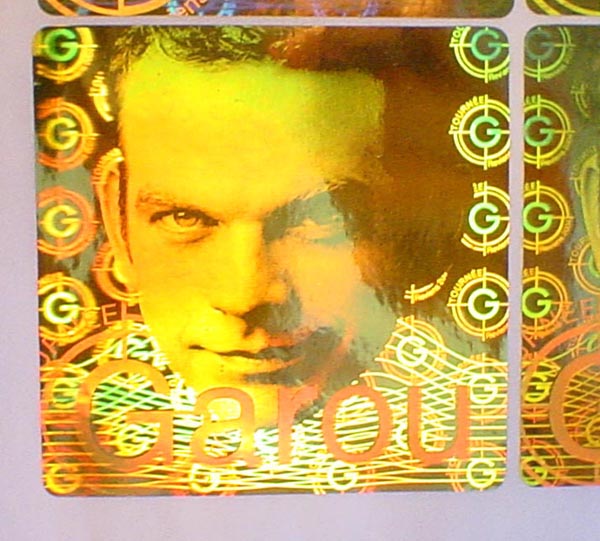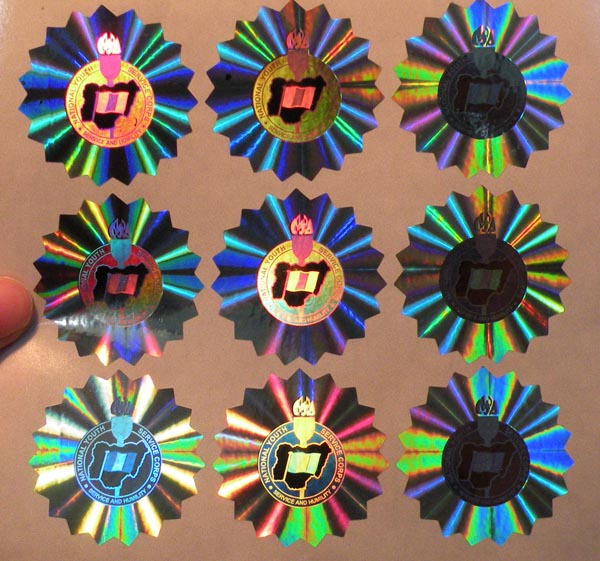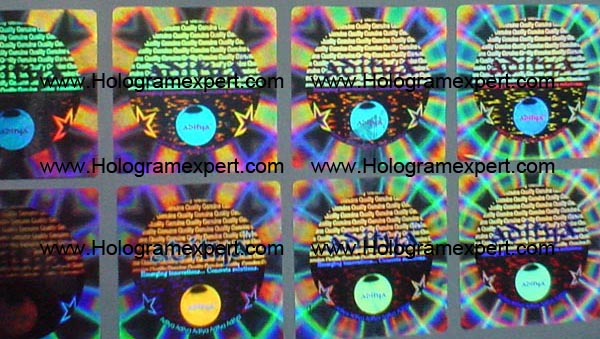Display Holography
Hologram technique is shown in the laser transmission hologram on the basis of up production of various types of holograms, such as the white light reflection hologram, white transmissive hologram, etc., various types of display holograms can be used for stage sets, architecture, interior decoration, projection etc.; Again, the dynamic display of holographic technology level X-ray radiography, 3DCAD technology, 3D animation, radar display orientation and simulation systems, etc., once every three years and has a holographic circles in the display holographic International Conference on the dean exhibition surprising hologram, which fully demonstrates the charm of the holographic technology, creative and artistic beauty.
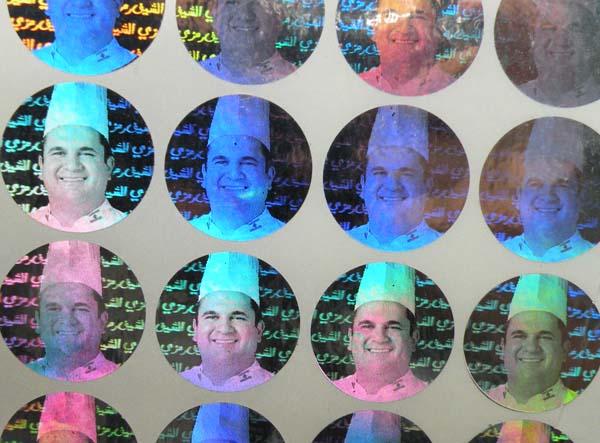
Display holography There are two major categories: The first category is the Denisyuk the single-beam method and Benton fenestration Lippmann hologram, production methods. The second category is the SA Benton rainbow hologram, which is a transmissive-type display holograms, a stereoscopic image can be reproduced under white light illumination, the change of the position and color of the image with the observation of the changes from red to purple after rain Rainbow named. With the development of high-quality recording material, some researchers and artists continue to pursue a more practical shooting techniques, such as false color coding and true color reflection holograms. "Applied Optics" and "Optics Letters" sponsored by the Optical Society of America in the 1980s have reported regarding this thesis. Sponsored by SPIE Holosphere and the American Hologram Manufacturers Association "Holography News" in the past and in recent years have reported the latest production technology on display hologram and business information. Holographic shortcomings mainly in the situation of these reports:
(1) Hologram has viewing angle range, the limited size of the image;
(2) Holograms have not been particularly effective in the method of calculation;
(3)Hologram resulting in dynamic display extremely difficult due to the huge number of holographic computing. Overcome the above shortcomings, will likely be some hot display holography research.
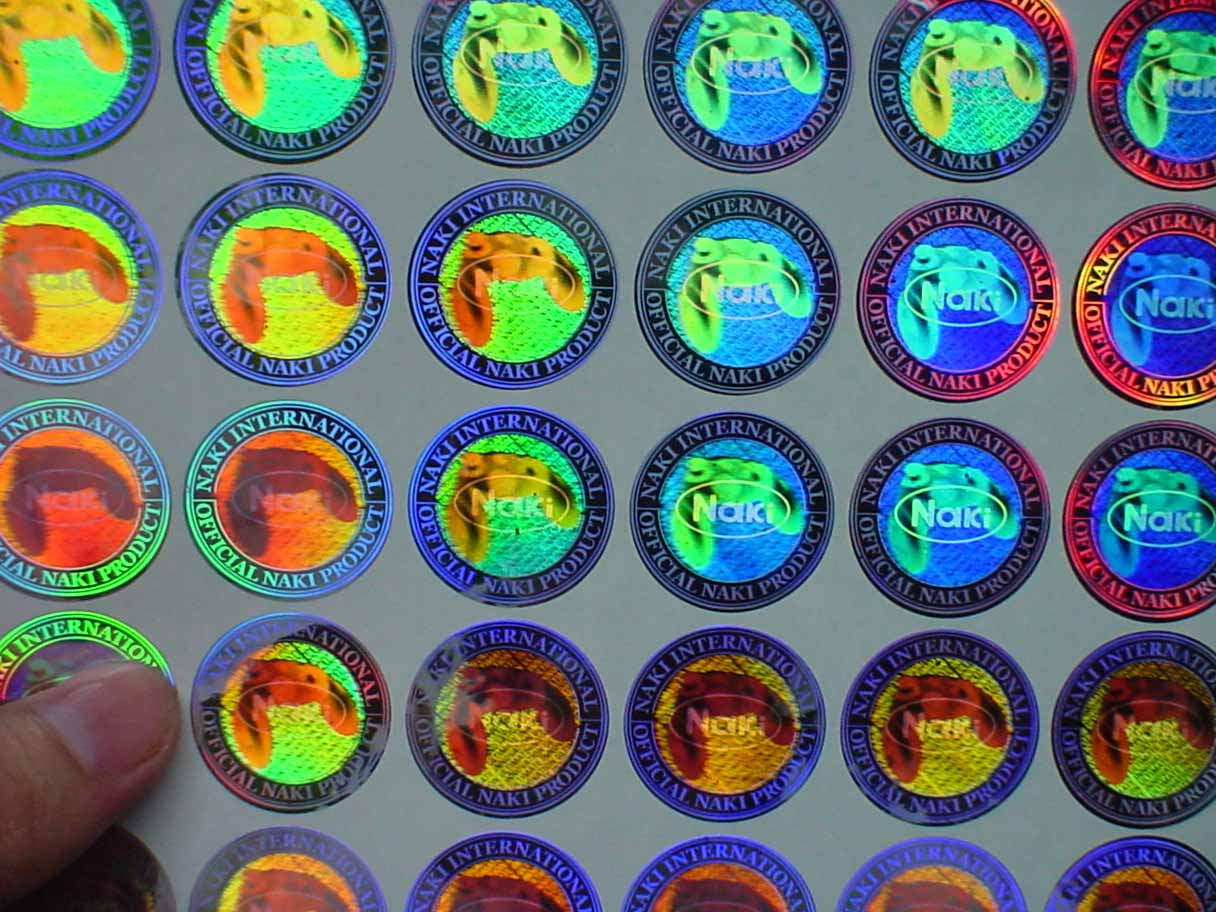
In recent years, set off a digital revolution holographic technology, the digital synthesis holographic technology opened up unprecedented prospects for the application of holographic three-dimensional display. With the improvement of the running speed of the computer and the development of high-resolution spatial modulation devices, a large field of display holography, large depth of field, full-parallax, true color, and can be assembled, inexpensive features in the near future to develop a real sense of holographic film and holographic television, to display holographic technology to create a good business prospects.
Embossed Hologram
Embossed hologram was fisrtly made by RCA Corporation in 1979. To address the video standard parts holographic copy, it is to holography and electroplating, stamping technology combine to make the hologram production industrialization, reproduced with white light, can be obtained colorful realistic three-dimensional images and can be mass-produced by printing, so it has been widely used in many fields, to market in a commodity form.
Production of embossed hologram is divided into three stages: hologram laser filming of the original film; electric molding metal template; molded copy. The three stages of the production process and technical requirements are higher, so the embossed hologram as a security anti-counterfeiting bear the brunt of a milestone of security anti-counterfeiting technology.
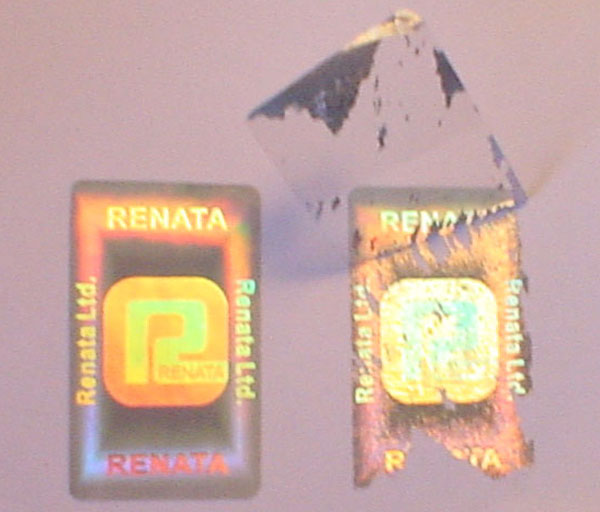
As the novelty of the hologram, a strong perspective effect, making more difficult, and easy to apply on the packaging of banknotes, can not remove the sexual inexpensive, easy to verify, it soon occupied the field of security.
Embossed hologram is a combination of technology and art, high-tech products, in terms of high-end merchandise promotions, the Branded Products Anti-counterfeiting or securities (such as credit card, bank notes, passport and visa) security and encryption as well as books, printing, dyeing, installed sulfonamide, commemorative stamps, and advertising signs are commonly used the embossed hologram technology, and highly user favor.
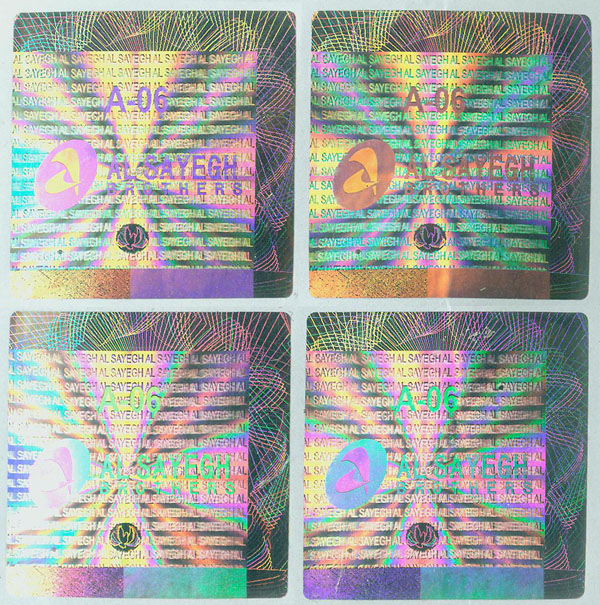
The embossed hologram appeared in the 1970s, and the mid-1980s, has formed an industry, reached a heyday in the 1990s. The beginning of this century, with the increasing requirements of the anti-counterfeiting technology, embossed hologram technology.
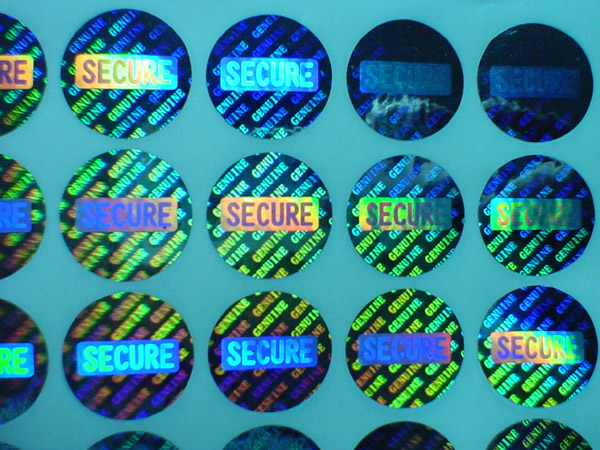
Embossed hologram a technological breakthrough, the security function has been improved, so that the laser holographic anti-counterfeiting technology to reach a new level.
First, is pioneering hologram hot stamping material to replace the gold film and silver film. Hologram packaging materials to achieve a three-dimensional anti-counterfeiting packaging. The direction of the embossed hologram technology and modern printing combined, reflecting the traditional art effects, artistic charm and modern technology.
History of Hologram
Holography dates from 1947 , when British (native of Hungary) scientist Dennis Gabor developed the theory of holography while working to improve the resolution of an electron microscope.Gabor coined the term hologram from the Greek words holos, meaning "whole," and gramma, meaning "message". Further development in the field was stymied during the next decade because light sources available at the time were not truly "coherent" (monochromatic or one-color, from a single point, and of a single wavelength).
|
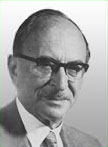
Dr. Dennis Gabor |
This barrier was overcome in 1960 by Russian scientists N. Bassov and A. Prokhorov and American scientist Charles Towns with the invention of the laser, whose pure, intense light was ideal for making holograms.
In that year the pulsed-ruby laser was developed by Dr. T.H. Maimam . This laser system (unlike the continuous wave laser normally used in holography) emits a very powerful burst of light that lasts only a few nanoseconds (a billionth of a second). It effectively freezes movement and makes it possible to produce holograms of high-speed events, such as a bullet in flight, and of living subjects. The first hologram of a person was made in 1967 , paving the way for a specialized application of holography: pulsed holographic portraiture. |
 |
In 1962 Emmett Leith and Juris Upatnieks of the University of Michigan recognized from their work in side-reading radar that holography could be used as a 3-D visual medium. In 1962 they read Gabor's paper and "simply out of curiosity" decided to duplicate Gabor's technique using the laser and an "off-axis" technique borrowed from their work in the development of side-reading radar. The result was the first laser transmission hologram of 3-D objects (a toy train and bird). These transmission holograms produced images with clarity and realistic depth but required laser light to view the holographic image. |
 |
Their pioneering work led to standardization of the equipment used to make holograms. Today, thousands of laboratories and studios possess the necessary equipment: a continuous wave laser, optical devices (lens, mirrors and beam splitters) for directing laser light, a film holder and an isolation table on which exposures are made. Stability is absolutely essential because movement as small as a quarter wave- length of light during exposures of a few minutes or even seconds can completely spoil a hologram. The basic off-axis technique that Leith and Upatnieks developed is still the staple of holographic methodology.
Also in 1962 Dr. Yuri N. Denisyuk from Russia combined holography with 1908 Nobel Laureate Gabriel Lippmann's work in natural color photography. Denisyuk's approach produced a white-light reflection hologram which, for the first time, could be viewed in light from an ordinary incandescent light bulb. |
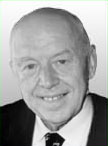 |
Another major advance in display holography occurred in 1968 when Dr. Stephen A. Benton invented white-light transmission holography while researching holographic television at Polaroid Research Laboratories. This type of hologram can be viewed in ordinary white light creating a "rainbow" image from the seven colors which make up white light. The depth and brilliance of the image and its rainbow spectrum soon attracted artists who adapted this technique to their work and brought holography further into public awareness.
Benton's invention is particularly significant because it made possible mass production of holograms using an embossing technique. These holograms are "printed" by stamping the interference pattern onto plastic. The resulting hologram can be duplicated millions of times for a few cents apiece. Consequently, embossed holograms are now being used by the publishing, advertising, and banking industries.
|
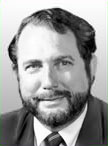 |
In 1972 Lloyd Cross developed the integral hologram by combining white-light transmission holography with conventional cinematography to produce moving 3-dimensional images. Sequential frames of 2-D motion-picture footage of a rotating subject are recorded on holographic film. When viewed, the composite images are synthesized by the human brain as a 3-D image.
In 70's Victor Komar and his colleagues at the All-Union Cinema and Photographic Research Institute (NIFKI) in Russia, developed a prototype for a projected holographic movie. Images were recorded with a pulsed holographic camera. The developed film was projected onto a holographic screen that focused the dimensional image out to several points in the audience.
Holographic artists have greatly increased their technical knowledge of the discipline and now contribute to the technology as well as the creative process. The art form has become international, with major exhibitions being held throughout the world. |
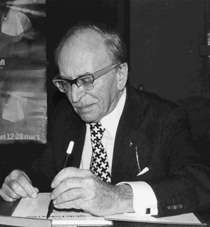 |
|
![]() English
English ![]() French
French ![]() German
German ![]() Spanish
Spanish ![]() Portuguese
Portuguese ![]() Italian
Italian ![]() Russian
Russian ![]() Romanian
Romanian ![]() Bulgarian
Bulgarian ![]() Hungarian
Hungarian ![]() Czech
Czech ![]() Danish
Danish ![]() Suomi
Suomi ![]() Turkish
Turkish![]() Swedish
Swedish![]() Norwegian
Norwegian![]() Slovenian
Slovenian ![]() Polish
Polish![]() Croatian
Croatian ![]() Slovak
Slovak ![]() Maltese
Maltese ![]() Lithuanian
Lithuanian![]() Latvian
Latvian![]() Slovak
Slovak ![]() Afrikaans
Afrikaans ![]() Arabic
Arabic ![]() Chinese(S)
Chinese(S) ![]() Chinese(T)
Chinese(T) ![]() Japanese
Japanese ![]() Korean
Korean ![]() Vietnamese
Vietnamese ![]() Thai
Thai ![]() Malay
Malay ![]() Indonesian
Indonesian








